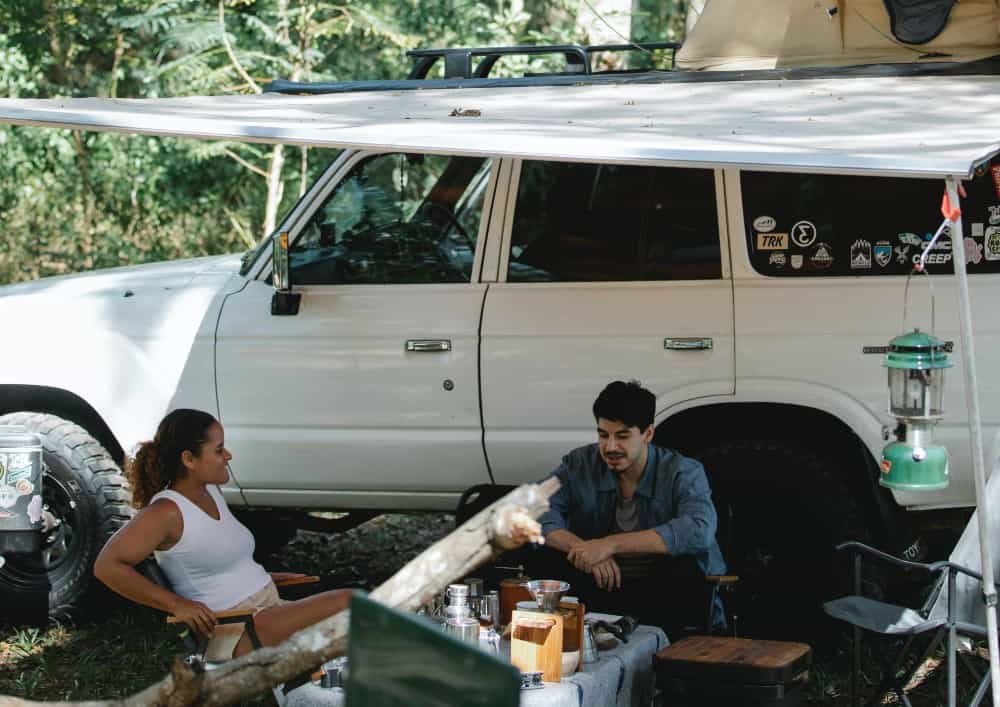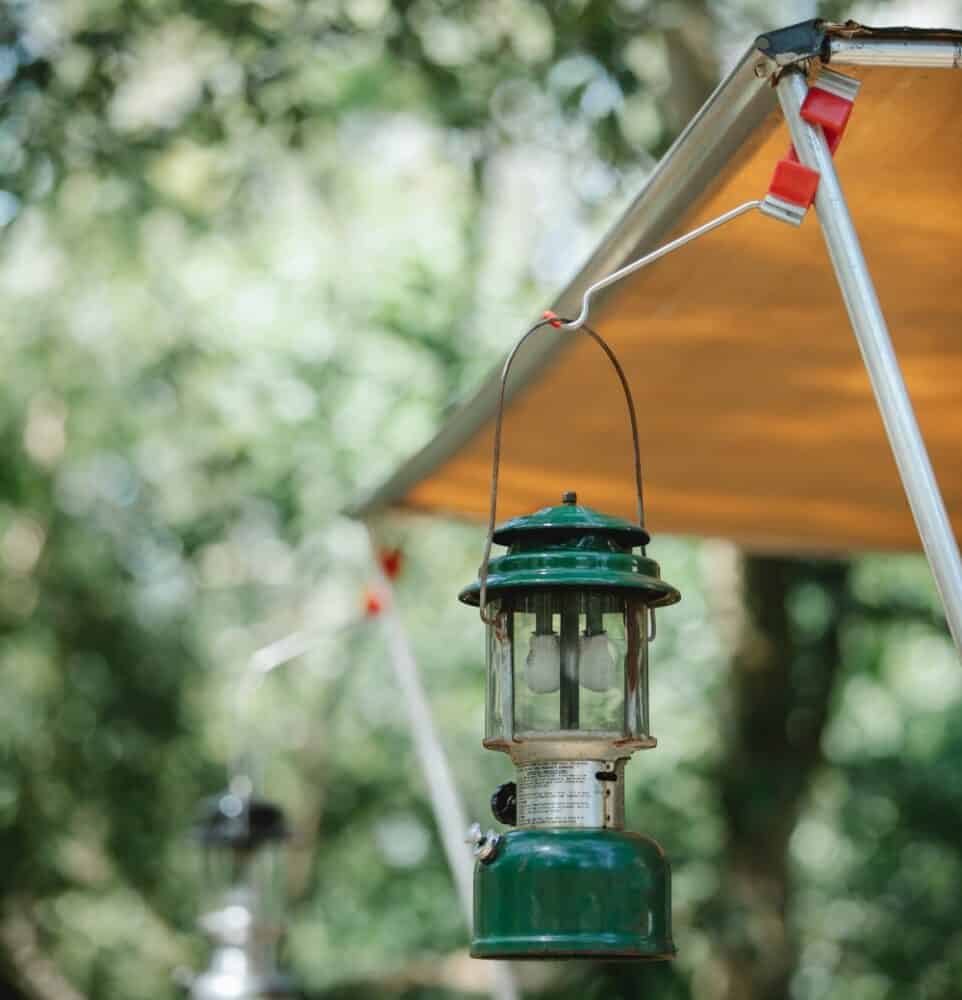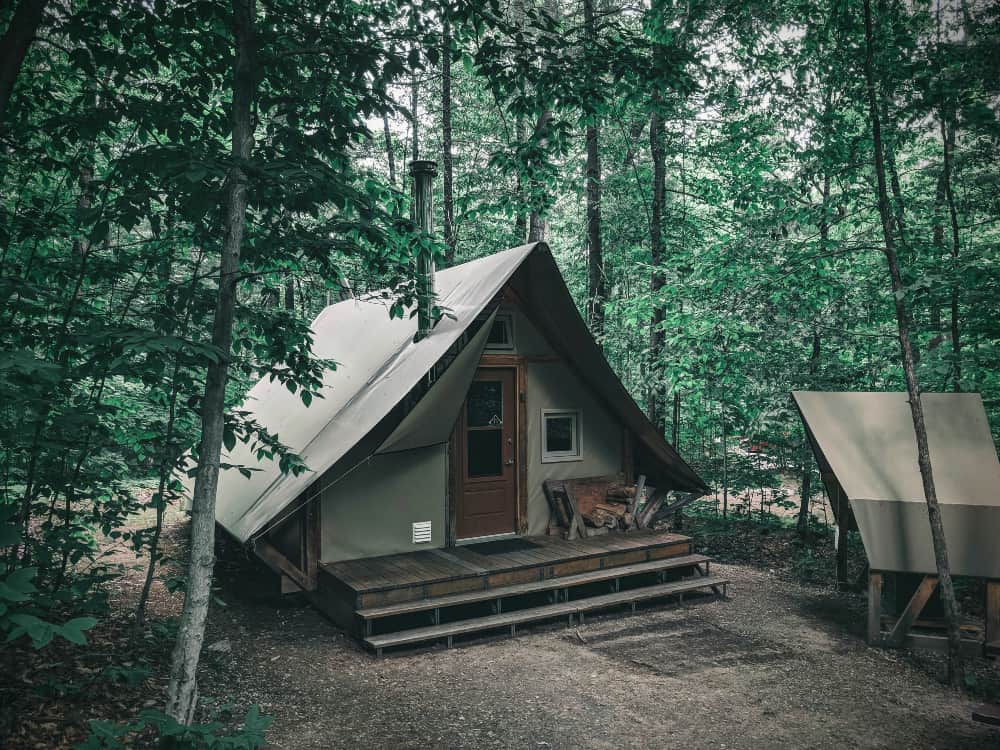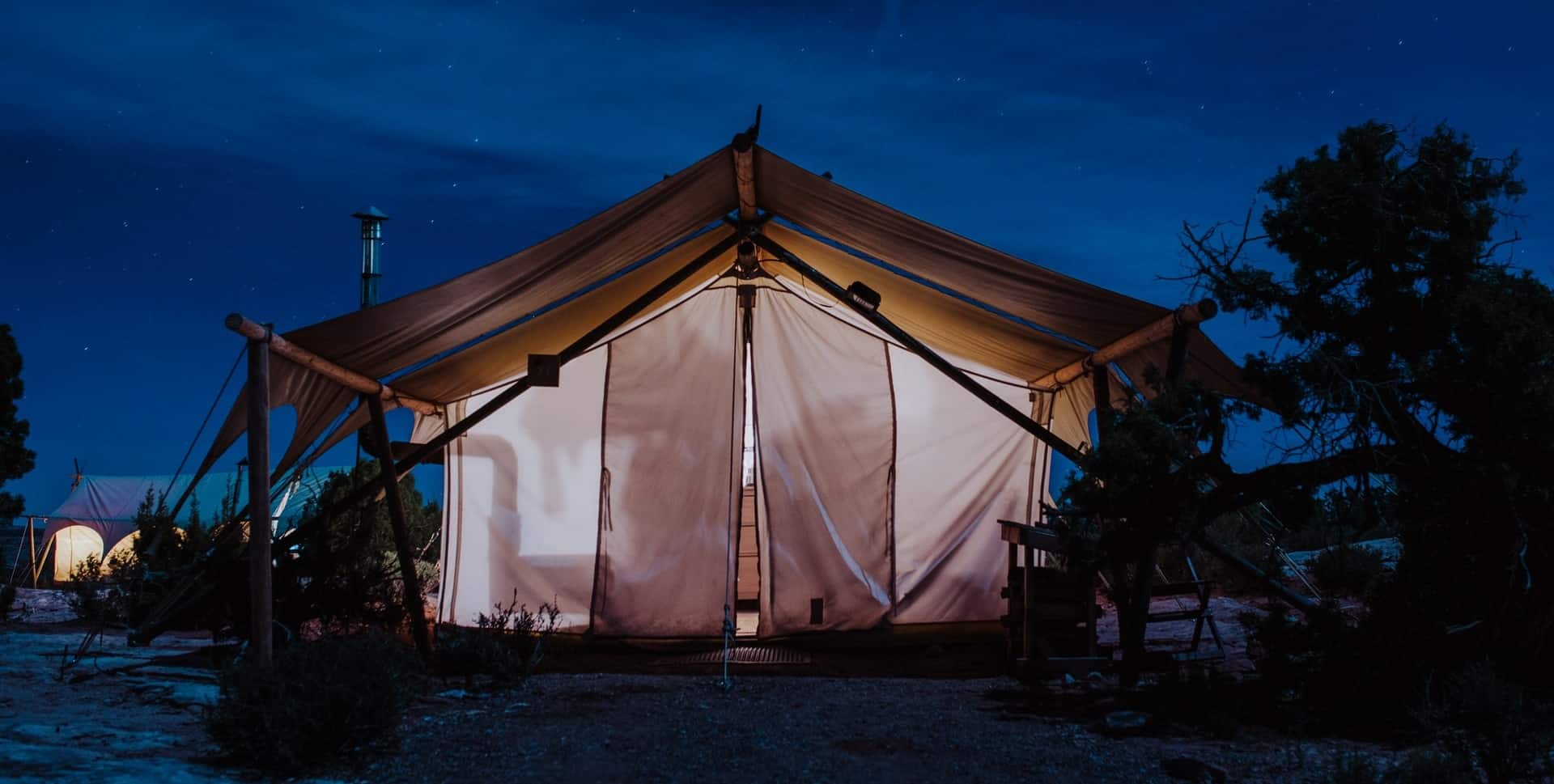On nearly every camping list on the internet, a tarp or tarpaulin appears. Cool. You’re happy to get one, but when you get to the camping or hardware store, there is an awful lot of choice…
What do you actually need a tarp for when you are camping? Do you get a big one? Is bigger better? But they are heavy… Do you get a small one? They are lighter and easier to carry, but how small is too small?
The best tarp size for camping is determined by the number of people, type of camping, and weather conditions. A small tarp (6×10 feet) should be used for solo camping, a medium tarp (11×13 feet) for car camping, and a large tarp (13×13 feet or larger) for group base camping.
We have delved into the world of tarps and can tell you what size tarp you’ll need for what use. Wondering what size tarp for camping? Find out what size tarp you need, when, and why, and never be confused again!
Related: Looking for a large tent that can handle the whole family? Check out our reviews of the best 10 person tent.

Tarp size for different uses
When deciding on a suitable tarp size, you need to know what you plan to use it for.
- Tarps can be used to cover tents like a rainfly. Maybe you have a tent that leaks or you’re not sure of the weather, then putting a tarp over your tent is sensible.
- Tarps are also handy for sitting under for shade from the sun or shelter from the rain away from your tent as you relax or eat dinner.
- You might also want a shelter for your gear to protect it from the night dew, wandering animals, or a passersby.
- You can also use a tarp for a tent footprint if you’re worried about rocky or rough ground damaging the floor of your tent.
Before you select a tarp, you need to know what its primary use will be so you can select a suitable size.
You will need a bigger tarp for A-frame setups as they take up more tarp but a straight canopy shelter will give you the same space underneath as the tarp.
Tarp size for a tent footprint
The reason for putting a tarp under a tent is so that you protect the base of your tent from rips, holes, and tears. It makes sense to spend $20 on a tarp than $300 on a new family tent.
BUT, the tarp needs to be the same size or a couple of inches smaller so that it doesn’t let water from your tent or fly get between the tarp and the tent base. You can fold the tarp so that it fits under your tent but don’t put the fold line or edges where you are going to sleep. It may be a bit uncomfortable.
The water coming down the sides of the tent needs to be able to seep into the ground and not be trapped by a wide waterproof layer – your tarp – and start pooling under your tent.
Size of tarp for going over your tent like a rainfly
A tarp that needs to go over your tent needs to be about 4 feet longer than the base of your tent, both in length and width.
| 👨👩👧👦 Tent capacity | 🏕️ Tent floor size (ft) | ☂️ Actual tarp size (ft) |
| 1 person | 7.7’ x 3.2’ | 10’ x 6’ |
| 2 people | 7.2’ x 4.6’ | 10’ x 8’ |
| 3 people | 7.6’ x 7’ | 12’ x 12’ |
| 4 people | 9’ x 7’ | 13’ x 11’ |
| 6 people | 10’ x 9’ | 13’ x 13’ |
You also need to make sure that your tarp is taut, free from wrinkles, and doesn’t sag. These cause water to pool and leak inside. A taut tarp lets the water flow quickly off the tarp and onto the ground away from the tent.
If you use a tarp that is substantially bigger than that you can run into a couple of issues. The tarp may collect too much water and sag or collapse onto your tent.
The bigger the tarp the easier it is to blow away and so needs more ropes to hold it down. So you’ll also have to bring more gear to set it up. It’s best to bring a tarp that is the right size than extra gear.
Tarp over your tent for sun protection
A tarp over your tent is a great way to increase the life of you and your tent! You both need protection from the damaging UV rays and a waterproof tarp will also make a great UV barrier!
Make sure the tarp is shading your tent in the hot afternoon sun when the heat and UV rays are at their worst. Morning sun will warm up the tent and dry off any dew that has formed or rain that has fallen.
Size of tarp for making an a-frame tent
To make a basic A-frame over the top of your tent that will shed water or protect you from the sun, you will need a tarp about 4 feet bigger than the floor of your tent.
So a 10 x 10 foot tent will need a 14 x 14 foot tarp to cover it for a decent shelter.
Remember to count how many poles, guy ropes, and stakes you will need to put it up as well!
Tarp over a hammock
Again, the tarp needs to extend over the hammock at both ends to do its job of sheltering and protecting you. You can buy specialized hammock tarps or for more casual fair weather camping, a square or rectangle tarp will do the job.
The tarp needs to extend about 1 foot over each end of the hammock. Remember that a tarp slung over a rope between two trees is going to sag and you won’t be able to put a pole under it.
Hammocks vary greatly in length. Make sure you measure yours before you buy the tarp!
You will still need guy ropes and stakes and depending on where you are pitching your tarp, a pole or two could be handy. Practice before you leave home.

What factors will affect the size of your tarp?
The difference between actual and cut tarp size
Before you rush off and grab a tarp, you need to understand the difference between cut size and actual size.
The cut size of a tarp is the size they started with, and the actual size is the one they ended up with after hemming it and putting eyelets. It works out that you lose 4-6% or about 6-8 inches in most cases.
Make sure you are looking at the actual size of a tarp so that it is as big as you expect it to be when you get to the campsite.
Weather: Rain and heat ventilation
For rain, an A-shaped tarp or one on an angle will work best for directing the rain off the shelter.
For shade, a high wide angle A-frame or flat shelter will give you the most room, airflow, and cover.
The number of people in your group
If you allow about 15 sq ft per person you should have enough room for people to sit in chairs in a group without feeling cramped. However, do add a little more room if you’re protecting people from rain as a bit of extra wind can push the rain onto people sitting close to the sides.

Pros and cons of choosing a larger tarp than needed
👍 Pros
- Extra space if it rains.
- Extra shade if it’s hot.
- UV protection from all sides all day.
- No bird or bat dropping will get on your expensive tent.
- Less condensation inside your tent.
- Less dew on your tent in the mornings.
- Allows space for a camp kitchen with all the above benefits right next to your tent
👎 Cons
- Expense. The bigger the tarp the more it costs. Also extra cost for extra poles, stakes, and ropes.
- If it rains, it may fill up with water and sag on your tent or collapse!
- You will need extra gear (poles, rope, stakes) to put up a bigger tarp. Extra weight and space.
- You will have more guy lines to trip over in the dark.
- It takes longer to put up and pull down.
- You will need more people to put it up the bigger it is…
FAQ
What is the best tarp size for camping?
The best tarp size for camping is determined by the number of people, type of camping, and weather conditions. A small tarp (6×10 feet) should be used for solo camping, a medium tarp (11×13 feet) for car camping, and a large tarp (13×13 feet or larger) for group base camping.
How thick should a tarp be under a tent?
That depends on how far you are caring both the tarp and the tent.
For car campers bring a nice thick one and enjoy the comfort underfoot and the peace of mind that you are protecting your tent floor from wear and tear. A thicker one is likely to be more waterproof and will also insulate the bottom of the tent from the cold ground as well as stop water from seeping in.
For hikers and people who have to walk their gear any distance, it will come down to weight and space. You will probably end up with a tarp that is lighter and thinner or one that is specially designed as a hikers tent footprint. Pricier, but well worth it from a space and weight point of view!
Should my tarp be bigger than my tent?
Yes – By about 4 feet both ways so that it covers the whole tent and you have extra to make the A shape to let the rain runoff away from the tent.
What kind of tarp should I put under my tent?
A thick waterproof one that is about 2 inches shorter on each side than your tent. The idea of a tent “footprint” is that it protects the floor of your tent from rips and tears if the ground isn’t perfectly flat. It reduced the wear and tear on your tent floor and increases the life of your tent.
Its other use is to stop water from entering through the tent floor. If your tent is older, it may be thinner or the waterproofing worn. The tarp will stop the water from seeping in through the bottom, especially if it is raining.
Tarps are a useful and practical part of your camping tent’s kit and one you probably shouldn’t be without. From shelter to ground cover to emergency beacon to keeping your firewood dry, tarps have their place on every camping checklist. Grab one the size you need and get out and get tarping on your next trip away!
Happy Camping! 😊
Next up: You’ve got an old tent that is beyond repair but you don’t want to chuck it in the trash. Find out how to recycle a tent.
Back one: A question we get asked over-and-over, but could it damage your tent? … Can you wash a tent in the washing machine?
